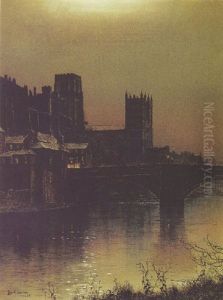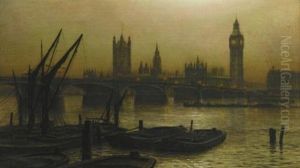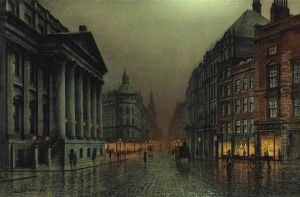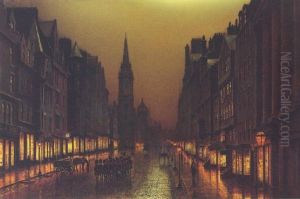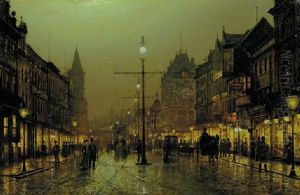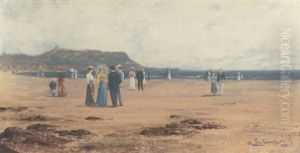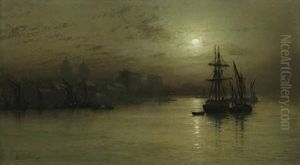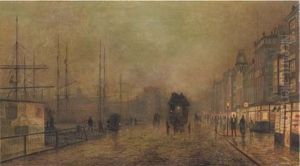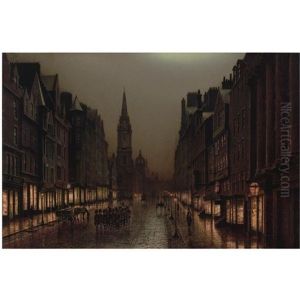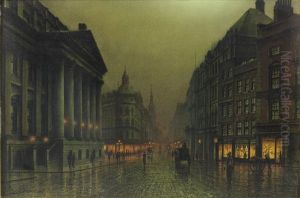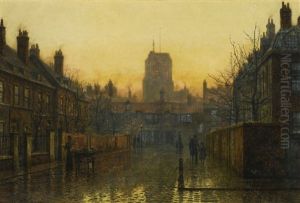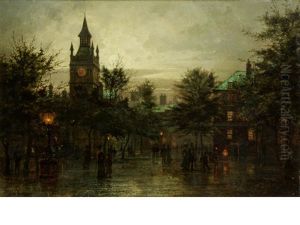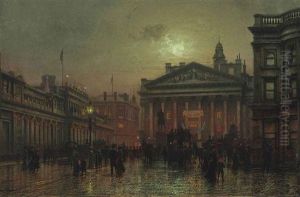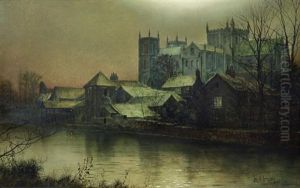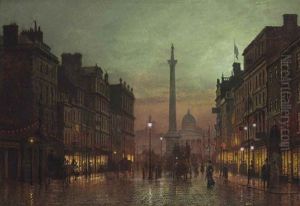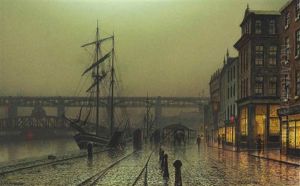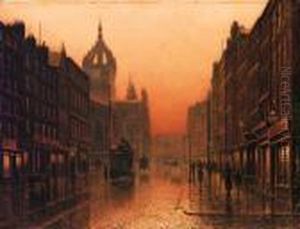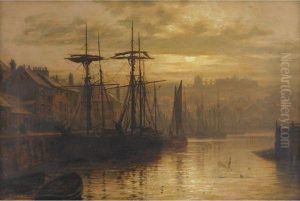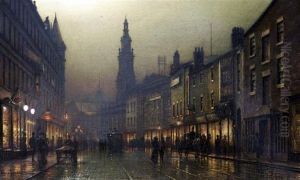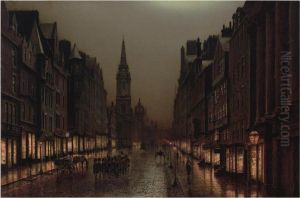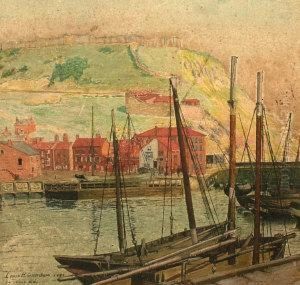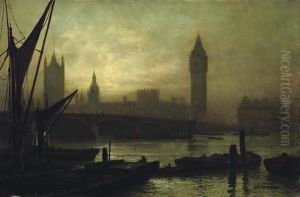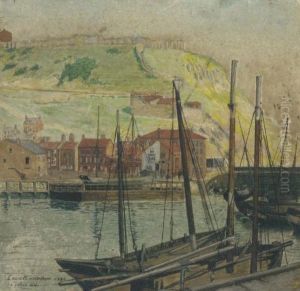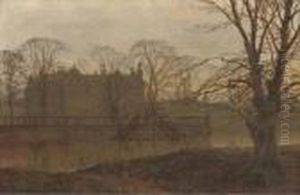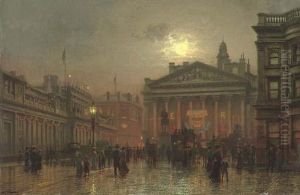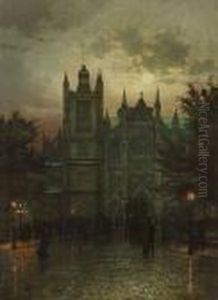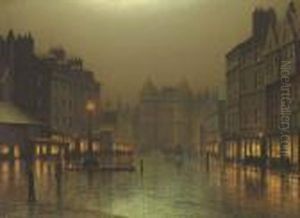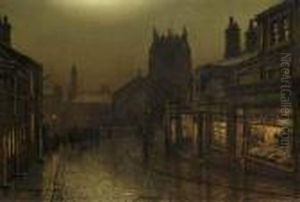Louis H. Grimshaw Paintings
Louis H. Grimshaw was born in Leeds, England, in 1870, stepping into a world that was on the cusp of the modern era. He was the son of the renowned artist John Atkinson Grimshaw, who was famous for his night scenes and landscapes, imbuing a sense of ethereal beauty into the mundane. This environment undoubtedly influenced Louis, as he grew up surrounded by art and the creative process.
Louis H. Grimshaw followed in his father's footsteps, developing a keen interest in painting from a young age. He was particularly drawn to the atmospheric effects of light and shadow, a fascination that would come to define his work. Like his father, Louis often depicted urban scenes, capturing the essence of city life during the late 19th and early 20th centuries with a distinctive touch. His works are noted for their attention to detail, the play of light on surfaces, and a certain moodiness that echoes the style of his father, yet Louis infused his paintings with a unique quality that made them distinctly his own.
In the early 20th century, Grimshaw's work was well-received, with his paintings being exhibited in various galleries. However, unlike his father, Louis faced a rapidly changing artistic landscape. The emergence of modernism and a shift in public taste posed challenges to artists adhering to more traditional styles. Despite this, Louis continued to paint, steadfast in his dedication to capturing the interplay of light and shadow in urban settings.
Louis H. Grimshaw's contributions to the art world were overshadowed by his father's legacy and the shifting trends in art. Nevertheless, his paintings remain a valuable record of the period, offering insight into the urban environment of his time and the enduring appeal of capturing light in its myriad forms. Louis passed away in 1943, leaving behind a body of work that, while perhaps not as widely recognized as that of his father, is cherished by those who appreciate the subtleties and beauty of pre-modern British art.
